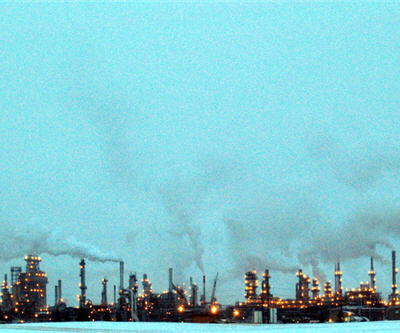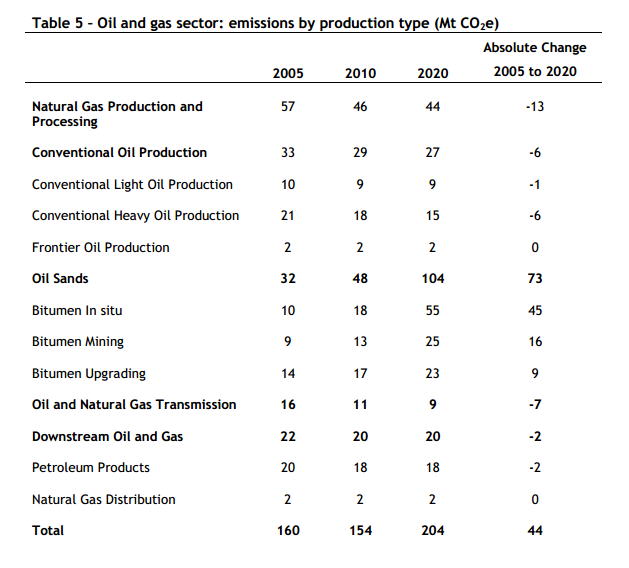Five times more greenhouse gases from oil sands in situ production by 2020

While the economy overall is producing less greenhouse gases, oil sands will be increasing emissions substantially.
Envrionment Canada released its report on emission trends showing that total emissions are declining across large parts of the economy, even while Canada’s GDP has continued to rise.
“Canada’s total greenhouse gas emissions in 2010 were 692 Mt, essentially unchanged from 2009 levels (a 0.25% increase). This means that between 2009 and 2010, Canada’s emissions remained steady despite economic growth of 3.2%,” writes the authors of the report.
The reason for the change? Economic growth is becoming decoupled from emission increases. The service side of the economy is growing, which is less energy intensive. Also energy production, manufacturing and transportation have all become more efficient.
“According to the report, Canada is now half way to its target of reducing total greenhouse gas emissions by 17 percent from 2005 levels by 2020,” writes the Minister of the Environment, Peter Kent.
“Last year, we were one-quarter of the way to our goal. And now we’re half way there. This shows the significant progress we are making in meeting our Copenhagen commitment.”
However, oil sands’ emission are expected to grow substantially between 2005 and 2020. Oil sands mining will double emissions, and in situ will increase five times.
Alberta’s overall emissions will increase by 23% between 2005 and 2020.
Mining, one of the emission-intensive industries along with cement, chemicals and pulp and paper, are expected to grow slightly, emitting six MT in 2005 and rising to eight in 2020.
{{ commodity.name }}
{{ post.title }}
{{ post.date }}





Comments
Oilsands worker
The oilsands contibute substantialy to the Canadian economy with production and jobs.It is a small wonder that they produce more emissions than the rest of Canada as the rest of Canada no longer has a manufacturing sector and produces very little in the way of jobs or product.As I look out the window I can can assure people that the oilsands produces way less environmentaly damaging emmissions than the people in cities like Toronto who use the oilsands product to fuel their daily commutes to office jobs.The oilsands has clean air and never has a smog warning.If you want to reduce environmental impact then do not use the product.Push your cars and never use plastic again.Should not be a problem as Canadians have given up on making anything and our country is turning into the worlds warehouse.Smarten up and support Canadian manufacturing and job production.